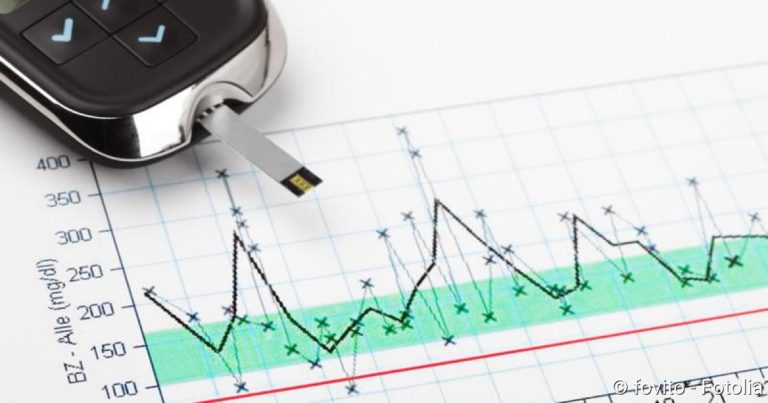Angina pectoris: symptoms, warning signs, causes, treatment
Angina pectoris: symptoms, warning signs, causes, treatment
Angina pectoris (medical stenocardia) means chest tightness. It manifests itself in a sudden pain in the heart area and a feeling of pressure in the chest. Angina pectoris is triggered by a lack of oxygen in the heart. There is danger to life, therefore you should call the emergency doctor immediately! Angina pectoris can usually be treated well with medication. Among other things, you will learn how the symptoms differ between men and women and what you can do to avoid angina pectoris.

Brief overview
- What is angina pectoris? sudden onset of painful chest tightness
- Symptoms: Pain behind the breastbone, which may radiate, including shortness of breath, nausea, feeling of tightness in the throat, numbness and anxiety, in women/elderly people: Fatigue, shortness of breath
- Causes: insufficient supply of oxygen-rich blood to the heart (usually due to coronary heart disease, CHD)
- Risk factors: smoking, high blood pressure, diabetes mellitus, advanced age
- Treatment: medication (especially nitro preparations); possibly surgery
- Prognosis: Angina pectoris can be severe and even lead to a fatal heart attack. It is therefore essential that it be treated. General measures such as exercise and a healthy diet are also important to reduce the risk of a seizure.
Angina pectoris: symptoms & warning signs
Angina pectoris (chest tightness, cardiac tightness, stenocardia) is a term used by doctors to describe a pain behind the breastbone that occurs in a seizure-like manner. This is usually the main symptom of arteriosclerosis of the coronary arteries (coronary heart disease = CHD). So angina pectoris is actually a symptom and not a disease.
Depending on the course of the disease, physicians distinguish between stable and unstable angina pectoris.
General angina pectoris symptoms
Angina pectoris usually manifests itself with sudden pain and a feeling of tightness, burning, pressure or oppression behind the breastbone. The pain often radiates to other parts of the body, such as the neck, throat, lower jaw, teeth, arms or upper abdomen. In addition, pain between the shoulder blades may occur.
Affected people also often describe a feeling of heaviness and numbness in the arm, shoulder, elbow or hand. This usually affects the left side of the body. In addition, symptoms such as sudden shortness of breath, nausea, vomiting, sweating and an oppressive, choking feeling in the throat may occur. These signs are often accompanied by feelings of anxiety up to fear of death and suffocation.
Special features for women
Angina pectoris in women usually manifests itself with different symptoms than in men: symptoms such as fatigue, shortness of breath and stomach problems are the typical signs. The classic chest pain, on the other hand, occurs in only a few women.
Special features for older people
Older patients (especially those over 75 years of age) often show similar angina pectoris symptoms to women. During a seizure, they often only complain of shortness of breath and a performance kink.
Special features of diabetes
Angina pectoris in diabetes (sugar disease) has a special feature: Patients with diabetes-related nerve damage (diabetic polyneuropathy) often feel no pain because pain stimuli can no longer be fully transmitted by the damaged nerves. Angina pectoris in diabetics can therefore be almost painless (silent) or accompanied by only slight pain.
Stable angina pectoris: symptoms
In stable angina pectoris, the attacks of angina pectoris proceed relatively similarly each time. The signs of tightness in the chest are caused by some form of stress. This can be a physical or emotional strain, cold or a large meal. The pain can radiate to the neck, lower jaw, teeth, shoulder and arms. The pain usually subsides within 15 to 20 minutes at rest. If one applies a nitro spray against the angina pectoris signs, they subside after about five minutes.
According to the Canadian Cardiovascular Society, stable angina pectoris is divided into five stages:
| Stadium | Complaints |
| No symptoms. | |
| I | No discomfort with everyday stress, but with sudden or prolonged exposure. |
| II | Complaints with increased exertion. Normal physical strain is little restricted. |
| III | Complaints in case of light physical strain. |
| IV | Complaints when resting and complaints with the least physical strain. |
Unstable angina pectoris: symptoms
Unstable angina pectoris refers to various forms of chest tightness with a non-constant symptom pattern. For example, seizures can become stronger or last longer from time to time. Or they also occur at rest or even at low levels of stress. Rest or previously effective medication (such as nitrospray) hardly helps against the symptoms.
A special form of unstable angina pectoris is the rare prinzmetal angina. This is where the heart disease vessels cramp (medical coronary vasospasm). It occurs in peace, for example in sleep.
Unstable angina pectoris can develop from a stable chest tightness or appear out of nowhere.
Unstable angina pectoris is divided into three degrees of severity:
| Class | Severity |
| I | New cases of severe or progressive angina pectoris |
| II | Angina pectoris at rest within the last month, but not within the last 48 hours |
| III | Angina pectoris at rest within the last 48 hours |
Unstable angina pectoris is associated with a high risk of heart attack (20 percent). For this reason, the emergency doctor must be called immediately in the event of a seizure! Incidentally, meizers speak of acute coronary syndrome when an unstable angina pectoris turns into a heart attack.
Angina pectoris: causes and risk factors
If the heart muscle is not sufficiently supplied with blood in a seizure, angina pectoris develops. The cause is usually a narrowing of the vessels as a result of arteriosclerosis of the coronary arteries. More rarely, an angina pectoris attack is caused by vasospasms, such as prinzmetal angina.
In arteriosclerosis – the main cause of angina pectoris – the blood vessels are constricted by deposited fats, blood platelets, connective tissue and calcium. If the vessels supplying the heart (coronary arteries) are affected, the heart receives too little oxygen and nutrients. Doctors then speak of coronary heart disease (CHD) with the main symptom angina pectoris.
Risk factors such as smoking, high blood pressure, diabetes mellitus (diabetes) and old age promote the deposition of blood fats on the artery walls. Inflammatory processes cause the wall of the blood vessel to transform – an arteriosclerotic (atherosclerotic) plaque develops. Over many years the vessels harden and their diameter becomes smaller and smaller. If such a plaque tears in the coronary arteries, blood clots form on site, which can completely block the artery.
If the heart muscle area supplied by this artery is subsequently no longer supplied with blood and dies, this is called a heart attack.
Angina pectoris in coronary heart disease: Deposits in the coronary arteries lead to reduced blood flow to the heart muscle, which can cause the feeling of tightness of the chest and pain.
The following factors increase the risk of coronary artery calcification (CHD)
- Nutrition: Fat-rich and high-calorie foods lead in the long run to overweight and high cholesterol levels.
- Overweight
- Lack of exercise
- male gender: Men have a higher risk of arteriosclerosis than women before menopause. The latter are protected by the female sex hormones (especially estrogen). After the menopause, when estrogen production stops, this protective effect is lost.
- genetic predisposition: In some families, cardiovascular diseases like CHD are more common, so genes seem to play a role. The risk is increased if first-degree relatives are affected by CHD before the age of 55 (women) or before the age of 65 (men).
- Smoking: Among other things, substances in tobacco smoke promote the formation of unstable plaques in the blood vessels.
- High blood pressure: Increased blood pressure values directly damage the inner walls of the blood vessels.
- increased cholesterol: High LDL cholesterol and low HDL cholesterol promote plaque formation.
- Diabetes mellitus: In poorly controlled diabetes, the blood sugar is permanently too high, which damages the blood vessels.
- increased inflammation levels: e.g. an increased CRP level in the blood (makes the plaques unstable).
- advanced age: the risk of coronary artery calcification increases with age,
Angina pectoris: treatment
The first goal of angina pectoris treatment is to prevent severe attacks and heart attacks. The risk of infarction is particularly high in unstable angina pectoris. These can be recognised, for example, by sudden pain and tightness in the chest from rest, or by the fact that the usual symptoms of angina pectoris are unusually severe.
If you have unstable angina pectoris, call an ambulance immediately! The patient must be taken to hospital as soon as possible because there is a high risk of heart attack.
Until the emergency doctor arrives, you should provide first aid: Loosen clothing that constricts the patient (e.g. collar, belt). Raise his upper body and try to calm the patient. If the whole thing happens in one room, you can open the window and let fresh air in. Many of those affected find this beneficial.
Angina pectoris: Drugs
An acute attack of angina pectoris is usually treated with nitro preparations such as nitroglycerine as a spray or capsule to bite. Nitro preparations dilate the coronary arteries. This relieves the heart and reduces oxygen consumption. As the vessels in the rest of the body dilate, blood pressure drops.
Nitro preparations must never be taken together with potency drugs (phosphodiesterase-5 inhibitors) as they also lower blood pressure. The blood pressure can then drop to life-threatening levels.
Other drugs that are used in angina pectoris therapy (even long-term) include drugs that keep the blood thin (platelet aggregation inhibitors such as acetylsalicylic acid or clopidogrel). So-called beta blockers are also often prescribed to patients. They reduce the heart rate and blood pressure under stress. This can prevent attacks of angina pectoris. Also helpful is the regular intake of vasodilators (vasodilators) such as various nitrates. The doctor can prescribe so-called statins against increased cholesterol levels.
Angina pectoris: heart surgery
The narrowed section of the vessel causing angina pectoris can be dilated by balloon dilatation: A small balloon is inserted through a thin plastic tube (catheter) into the constricted area of the vessel. On site the balloon is inflated so that it expands the constriction.
Another possibility for treating angina pectoris is a bypass operation. The surgeon bridges the narrowed vessel with a piece of the body’s own or artificial artery to restore the blood supply.
Angina pectoris: Healthy lifestyle
Successful angina pectoris treatment also requires the cooperation of the patient: Those affected should adopt a lifestyle that avoids or at least reduces risk factors of the breast tightness. This can be achieved, for example, with a healthy diet, regular exercise and by abstaining from nicotine. Overweight patients should also try to lose weight. The attending physician can advise and support patients in changing their lifestyle.
Angina pectoris: examinations and diagnosis
If anginga pectoris is suspected, the physician has various “tools” at his disposal to make a diagnosis and confirm it.
Interview and physical examination
First, the doctor will take the patient’s medical history (anamnesis). He asks, for example, since when the symptoms of a heart defect have existed, how exactly they express themselves or whether they are triggered by something (such as physical exertion). The doctor will also ask whether the symptoms can be alleviated with a nitro spray.
The information from the anamnesis interview helps the doctor to assess whether the chest pain is caused by coronary heart disease (CHD) or another disease. For example, the complaints can also originate from the stomach. In addition, pulmonary embolism (i.e. the occlusion of a pulmonary vessel by a blood clot that has accumulated in the lungs) can also trigger similar symptoms to angina pectoris.
The next step is a physical examination. The doctor will, among other things, listen to the heart and tap the chest. A blood pressure measurement is also part of this examination. This enables the doctor to check whether the patient has high blood pressure (hypertension).
Imaging methods
Various imaging techniques help to check, among other things, the function of the heart and the blood supply to the heart muscle:
Ultrasound of the heart: In heart ultrasound (echocardiography), the doctor uses ultrasound to examine whether the heart muscle has changed. This enables him to assess the heart chambers and heart valves and their function.
Resting and long-term ECG: An electrocardiogram (ECG) shows the electrical activities of all myocardial fibres as a sum in a cardiac voltage curve. In more than half of the patients with angina pectoris the ECG is altered. If the doctor suspects cardiac arrhythmia, a long-term ECG is taken.
Stress tests for the heart: In most cases, a stress ECG with bicycle ergometry is also performed in the clinic or practice. The patient rides a stationary bicycle while the load is gradually increased. ECG and blood pressure values are measured simultaneously. The aim of a stress ECG is to achieve an insufficient blood supply to the heart muscle. If angina pectoris subsequently occurs and the ECG changes, this is called positive ergometry.
Stress Magnetic Resonance Imaging: Stress Magnetic Resonance Imaging (Stress MRI) offers another possibility for examination. The heart is artificially loaded by drugs such as dobutamine and adenosine (these drugs make the heart beat faster and stronger). The doctor provokes a lack of oxygen in the heart and examines this or its consequences in the MRT.
Cardiac scintigraphy: The cardiac or myocardial scintigraphy can show the blood flow in the heart muscle. For this purpose the patient is first injected with a weakly radioactive substance. It is distributed in the heart muscle according to the blood flow and is absorbed by the cells. The radioactive rays emitted by the substance are captured by a so-called gamma camera and displayed as an image. The picture shows which areas of the heart muscle are supplied with less blood. The gamma camera images are taken once at rest and once under stress. Myocardial scintigraphy is used when ECG and echocardiography are not sufficient to make a diagnosis of angina pectoris.
Angina pectoris: course and prognosis
The chest tightness is usually a sign of arteriosclerotically narrowed coronary vessels (coronary heart disease, CHD) and therefore a warning signal. Arteriosclerosis develops slowly over years. From a certain degree it can trigger angina pectoris even at low levels of stress. This can limit the quality of life and performance of the person concerned. The stronger and more frequent the attacks of angina pectoris, the higher the risk of a heart attack.
It is therefore important to treat angina pectoris as early as possible. This not only includes that the doctor prescribes the appropriate medication or performs an operation (balloon dilatation, bypass operation). Every patient can positively influence the course of angina pectoris, for example by refraining from smoking, eating a healthy diet and regular physical activity.
Angina pectoris: prevention
If you want to prevent angina pectoris, the same tips apply in principle as for people who already suffer from chest tightness: A healthy lifestyle can contribute significantly to keeping the heart and blood vessels healthy. This includes eating a healthy diet, taking regular physical exercise and losing weight if you are overweight. This reduces the risk of coronary heart disease (CHD), the most common cause of angina pectoris. It is also very important to avoid nicotine if you want to reduce your personal risk of angina pectoris. This is because smoking constricts the blood vessels and thus impairs the blood flow to the heart muscle (and other parts of the body).
You should also go for regular preventive medical checkups. Thus, diseases such as diabetes, high blood pressure or elevated blood cholesterol levels that damage the vessels can be detected and treated in time. If the doctor prescribes appropriate medication, you should take it regularly – even if you feel well at the moment.
Another tip: Avoid stress and treat yourself to regular recreation in your everyday life. This also helps to prevent angina pectoris.





